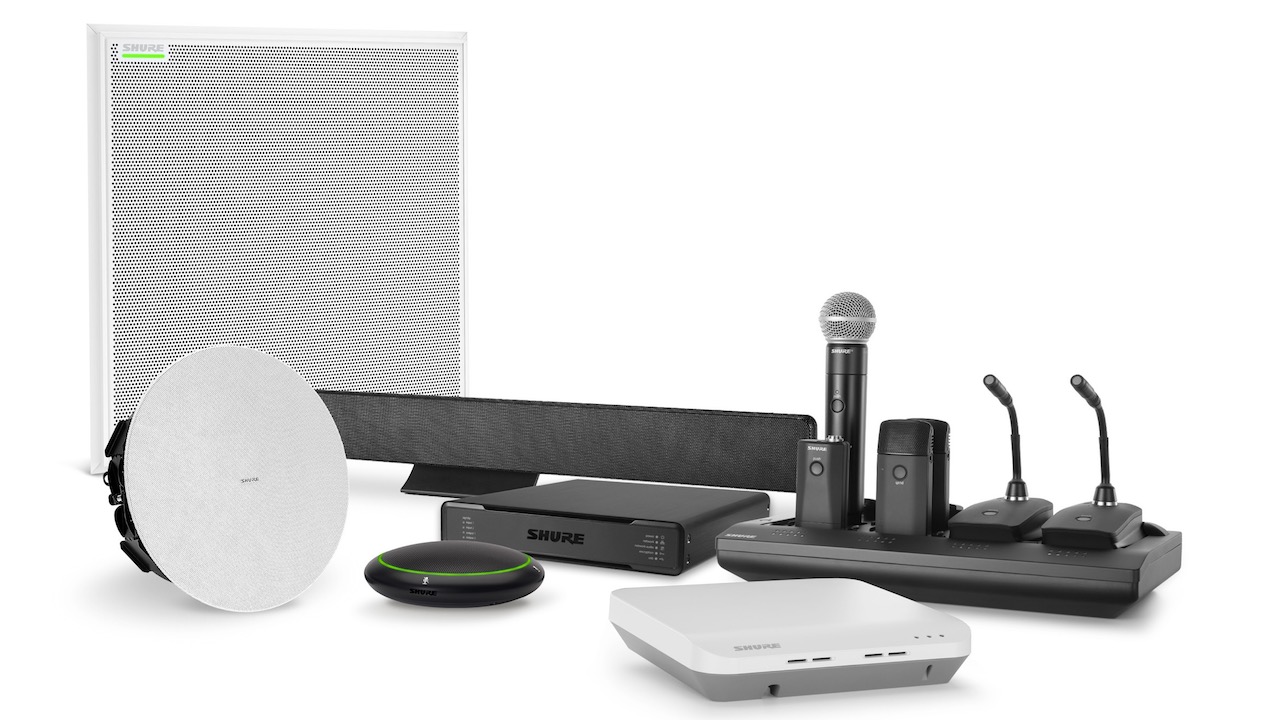Shure Expands Conferencing Solutions with Stem and Microflex Ecosystems

With the aim of expanding its conferencing solutions to a wider market, Shure is repositioning its offerings into two product lines: the Microflex Ecosystem to cover high-end, custom install needs, and the Stem Ecosystem to service more basic applications for end users. The realignment represents the next step following Shure’s acquisition of Stem Audio in 2020.
“Two players in the conferencing audio market joined forces to provide a wider variety of networked audio choices for customers,” said Nuna Becic, senior global marketing manager at Shure. “Shure is going to be able to further expand and diversify solution offerings for organizations of all sizes, and Stem Audio is going to be able to leverage that robust global infrastructure and support capabilities that we provide from a global audience standpoint.”
[ Shure Acquires Stem Audio to Expand Its Portfolio of Conferencing Audio Products ]
According to Becic, the two ecosystems will cover nearly any organization’s conferencing needs. “Microflex is more for those complex, specific, niche needs, where Stem is a simpler, more cost-effective solution for IT end users to scale very quickly to rooms,” she said.
Stem Ecosystem
The Stem Ecosystem consists of the following products, which can be purchased directly by end customers:
- Stem Wall: A soundbar equipped with 15 microphones that perform beamforming, plus full-range speakers and subwoofers
- Stem Table: A tabletop speakerphone equipped with nine microphones with beamforming and a downward-facing speaker
- Stem Ceiling: A 100-microphone ceiling array with two mounting options (low profile or chandelier mode) and three-beam options
- Stem Speaker: A PoE+ powered external speaker with three mounting options
- Stem Hub: A control hub that allows multiple Stem units in a room to communicate with one another, featuring USB Type B, Ethernet, Dante, VoIP connectivity, and pluggable terminal blocks for external speakers
- Stem Control: A dedicated touch controller that connects to the network with a single Ethernet connection, and allows access to the Stem Ecosystem platform and remote management of an organization, or can be used as an in-meeting controller with video conferencing platforms.

“Stem is an ecosystem of audio components designed for conference rooms—tabletop devices, wall-mounted devices, a ceiling microphone—that can be easily mixed and matched, all connected through the network, so that any user can customize a room,” said Jonathan Boaz, director of sales and marketing at Shure. “This is something that anyone from an AV integrator to an IT professional can install and easily set up on their own.”
[ Shure Conferencing Audio Ecosystem Review ]
A daily selection of features, industry news, and analysis for AV/IT professionals. Sign up below.
Microflex Ecosystem
Microflex Ecosystem products include:
- Microphones: Microflex Advance MXA910 Ceiling Array, MXA310 Table Array, and MXA710 Linear Array Microphones, and Microflex Wireless (MXW) Systems
- Loudspeaker: Microflex MXN5-C Networked Ceiling Loudspeaker
- DSP: IntelliMix P300 Audio Conferencing Processor and IntelliMix Room Audio Processing Software
- Software: Designer System Configuration Software and SystemOn Audio Asset Management Software
- Accessories: MXA Network Mute Button and Audio Network Interfaces

“The Shure portfolio now addresses any room that’s out there,” Boaz said. “Microflex can do really anything—anything from voice lift, to zoning of speakers. In addition to that, with the Stem Ecosystem as part of the offering, even the simple, straightforward rooms that are needed—a quick Zoom Room, for example—can be addressed with a single solution or by mixing and matching multiple devices.
“Anything from the huddle room to the most complex, high-end room, with both offerings, Shure has a solution for any room.”
Matt Pruznick is the former editor of AV Technology, and senior editor for Systems Contractor News and Residential Systems. He is based in New York.

